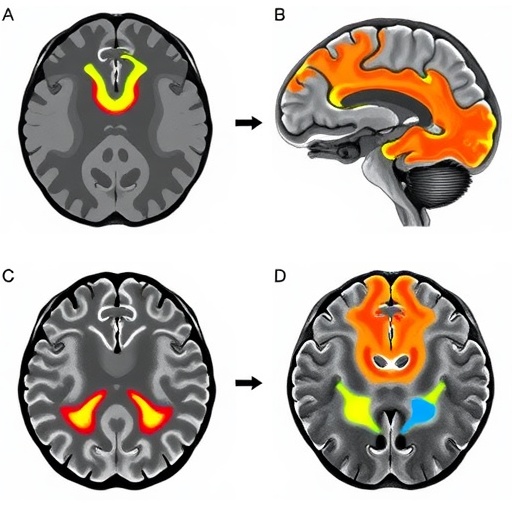
A groundbreaking advancement in pulmonary arterial hypertension (PAH) diagnosis has been unveiled by researchers at the Lewis Katz School of Medicine at Temple University. Pulmonary arterial hypertension, a severe and often fatal form of heart failure stemming from elevated pressure within the pulmonary arteries, frequently evades timely diagnosis due to its nonspecific early symptoms such as fatigue and shortness of breath. This lack of early detection dramatically affects patient outcomes, underscoring the critical need for novel screening methodologies that can seamlessly integrate into routine clinical workflows.
The innovative solution, a virtual echocardiography screening tool (VEST), has been meticulously developed to leverage the data-rich environment of electronic medical records (EMR). Unlike previous diagnostic strategies requiring manual interpretation and cumbersome calculations, VEST automates risk assessment by analyzing echocardiographic parameters directly within the digital infrastructure of hospitals. This automated approach not only accelerates the identification of individuals at high risk for PAH but also adds a consistent layer of objectivity to the initial screening process, potentially transforming how this elusive disease is approached clinically.
Clinical echocardiography has long served as a noninvasive cornerstone for evaluating cardiac structure and function. However, interpreting these studies for PAH detection requires nuanced understanding and can be subject to human error or delays in specialist referral. The VEST algorithm capitalizes on quantifiable echocardiographic indicators such as right ventricular systolic pressure estimates, right atrial enlargement, and interventricular septal flattening to generate a composite PAH risk score. Integrating these parameters into an automated EMR-based model facilitates instantaneous scoring, drastically reducing diagnostic latency.
.adsslot_Vhe7rWkAdw{width:728px !important;height:90px !important;}
@media(max-width:1199px){ .adsslot_Vhe7rWkAdw{width:468px !important;height:60px !important;}
}
@media(max-width:767px){ .adsslot_Vhe7rWkAdw{width:320px !important;height:50px !important;}
}
ADVERTISEMENT
Dr. Anjali Vaidya, lead author and esteemed co-director of the Advanced Pulmonary Hypertension, Right Heart Failure & Chronic Thromboembolic Pulmonary Hypertension Program at Temple University Hospital, stresses the transformative implications of VEST’s adoption. “Our tool offers a revolutionary step in pulmonary vascular medicine by embedding sophisticated risk stratification directly into routine echocardiographic interpretations, streamlining early detection efforts,” she states. Dr. Vaidya emphasizes that prior to VEST, many patients face extended periods without a definitive diagnosis, often receiving referrals to specialized centers only after their disease has advanced significantly.
Previous research by Dr. Vaidya and collaborators revealed that manual application of VEST scoring to echocardiogram data identified patients at risk for PAH an average of over 200 days before specialist referral was made. This startling finding illuminated the gap between initial clinical suspicion and the eventual confirmatory diagnosis of PAH via right heart catheterization, the gold standard for definitive evaluation. Alarmingly, by the time patients accessed expert pulmonary hypertension centers, many had already progressed to a stage associated with high mortality risk.
Building upon these insights, the current study expanded the scope by developing an EMR-integrated variant of VEST capable of automatically processing large patient datasets. Testing this algorithm on approximately 5,000 individuals who had undergone diagnostic echocardiograms demonstrated the tool’s strong concordance with manually calculated scores. Moreover, the EMR-based VEST was proficient in triaging patients based on risk, flagging those warranting urgent specialist evaluation and invasive hemodynamic measurement.
One of the most consequential revelations from implementing the automated screening tool was the observation that a substantial proportion of high-risk individuals—nearly one-third—had not been referred to pulmonary hypertension specialists despite manifesting severe hemodynamic impairment. This under-referral underscores persistent systemic barriers to optimal PAH care and highlights the necessity for tools like VEST which can integrate effortlessly into clinical decision-making pathways to prompt timely multidisciplinary attention.
The clinical ripple effects of VEST extend beyond early detection. Patients identified through the tool who were referred to expert centers consistently underwent right heart catheterization, confirming serious pulmonary vascular disease warranting aggressive management. Conversely, those not funneled to specialty care often missed out on critical diagnostic procedures and thus foregoing potential life-extending therapies. By facilitating automated risk stratification at the point of care, VEST represents a paradigm shift, reducing reliance on subjective clinical intuition and enhancing standardization.
Technical robustness and ease of implementation position VEST for widespread clinical adoption. Its fully automated nature circumvents existing workflow bottlenecks in busy hospital environments, eschewing additional time burdens on clinicians. In fact, Temple University Hospital has already embraced this tool within their cardiology services, with collaborative efforts underway to propagate VEST’s use nationally and internationally. Such scaling is anticipated to democratize access to advanced pulmonary hypertension screening, ultimately reducing disparities in outcomes.
From a pathophysiological perspective, early identification of PAH is crucial. The progressive increase in pulmonary vascular resistance leads to right ventricular overload and subsequent failure, a trajectory marked by poor prognosis if untreated. Timely initiation of disease-modifying therapies hinges upon early and accurate diagnosis. Therefore, VEST’s ability to pinpoint patients well before clinical deterioration not only offers survival benefit but also enhances quality of life by enabling earlier intervention.
Despite its promise, it is essential to acknowledge potential conflicts of interest. Dr. Vaidya maintains a financial stake in the VEST algorithm, highlighting the importance of ongoing independent validation studies and transparent reporting. As the medical community continues to evaluate VEST’s clinical utility, robust post-implementation monitoring will be necessary to confirm diagnostic accuracy and impact on patient outcomes in diverse healthcare settings.
The introduction of VEST exemplifies the growing trend of harnessing digital health technologies and artificial intelligence to supplement physician expertise. Embedded into the EMR, such algorithms can continuously learn and adapt, potentially expanding beyond PAH to other cardiovascular diseases characterized by subtle early manifestations. This convergence of clinical insight and computational power portends a new era of precision cardiology wherein prompt, tailored care becomes the norm rather than the exception.
As PAH remains a condition with significant morbidity and mortality worldwide, the deployment of the EMR-based VEST tool offers a beacon of hope for clinicians and patients alike. By bridging the gap between complex echocardiographic data and accessible risk stratification, this technological innovation aligns perfectly with modern healthcare imperatives—enhancing diagnostic efficiency, enabling proactive management, and ultimately saving lives on a broad scale.
Subject of Research: Pulmonary arterial hypertension diagnosis and screening.
Article Title: Novel automated electronic medical record-based VEST (virtual echocardiography screening tool) algorithm for pulmonary arterial hypertension.
News Publication Date: April 5, 2025.
Web References:
American Heart Journal Article
Temple Health Announcement
References:
Vaidya, A., Anand, S., Narowska, G., Gangireddy, C., Keane, M., Edmundowicz, D., Forfia, P., & Enevoldsen, J. (2025). Novel automated electronic medical record-based VEST (virtual echocardiography screening tool) algorithm for pulmonary arterial hypertension. American Heart Journal, https://doi.org/10.1016/j.ahj.2025.03.020
Image Credits: Temple Health
Keywords: Pulmonary arterial hypertension, PAH, virtual echocardiography screening tool, VEST, electronic medical record, EMR, echocardiography, right heart catheterization, pulmonary hypertension, heart failure, cardiology, diagnostic imaging
Tags: automated risk assessment in healthcareclinical workflow improvementdata-driven health technologyearly detection of heart diseaseelectronic medical records integrationheart failure detection technologyinnovative screening methodologiesLewis Katz School of Medicinenoninvasive cardiac evaluation methodspatient outcomes in heart failurepulmonary arterial hypertension diagnosisvirtual echocardiography screening tool





